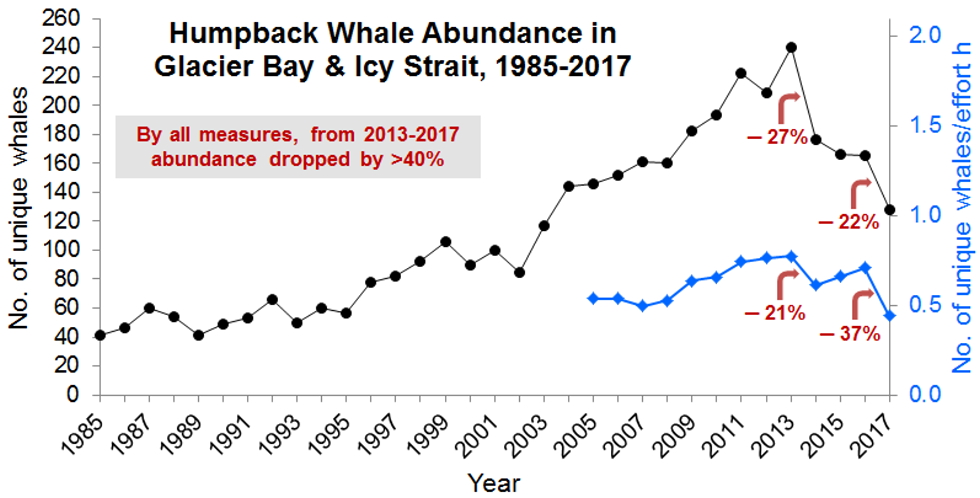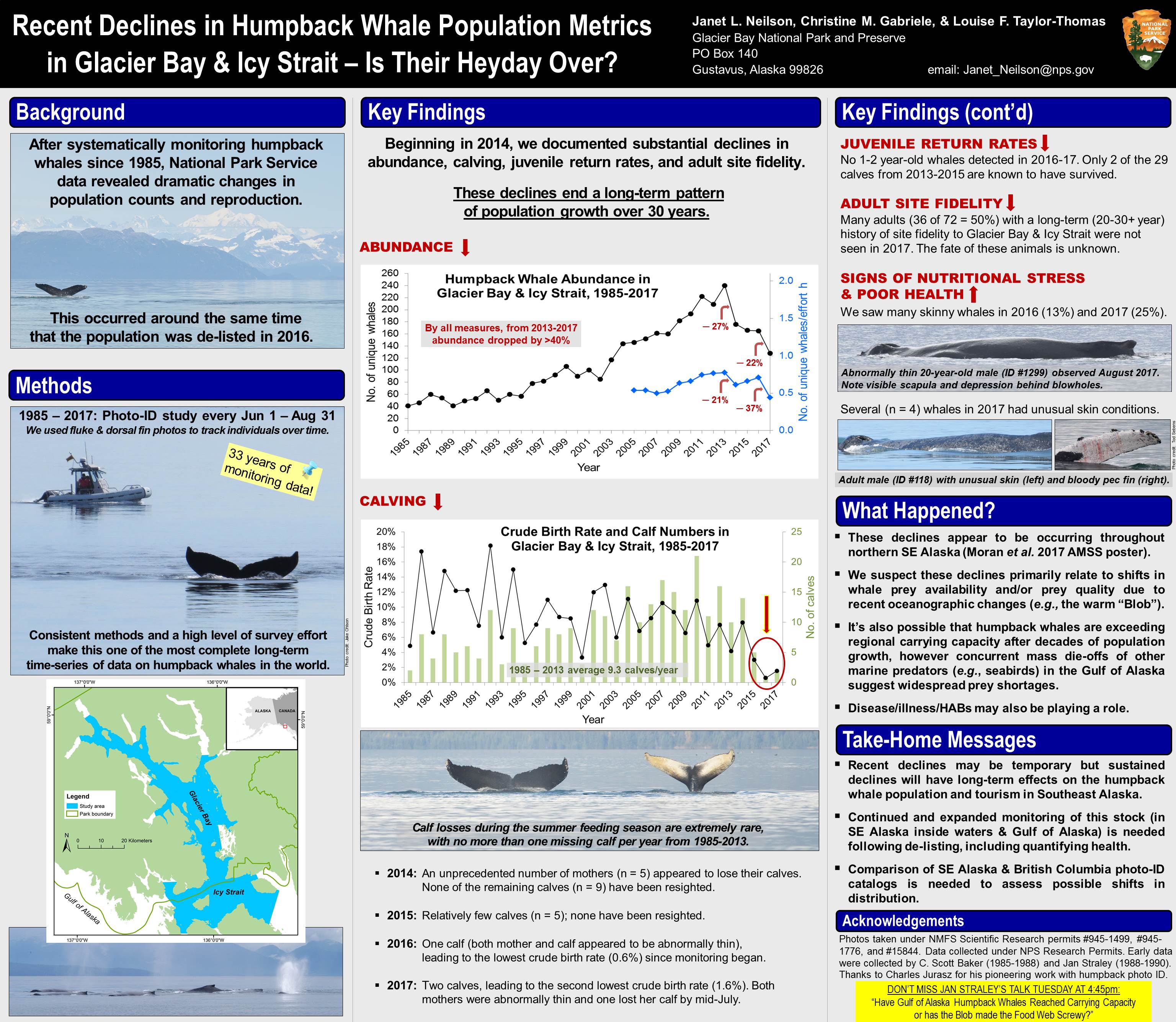
Abnormally thin 20-year-old male (ID#1299) as observed in August 2017. Note visible shoulder blade and depression behind blowholes.
Glacier Bay National Park biologists have consistently monitored the humpback whale population in Glacier Bay and Icy Strait every summer since 1985. After thriving for many years and being removed from the Endangered Species List in 2016, biologists recently detected dramatic declines in abundance, calving, juvenile return rates, and adult site fidelity. In addition, there are increasing signs that many whales are not finding enough to eat and are having health problems. These declines, which began in 2014, end a long-term pattern of population growth over 30 years.

Annual whale counts (black line) and whale counts corrected for survey effort (blue line) in Glacier Bay and Icy Strait from June 1 - August 31, 1985-2017. Effort hours represent time actively spent searching for whales.
Park biologist Janet Neilson summarized these results to present last week at the Alaska Marine Science Symposium Anchorage, Alaska. See the poster she created at the end of this blog post. (Unfortunately, the trip was canceled due to the government shutdown.) Neilson and lead park whale biologist Chris Gabriele are now working on a manuscript to publish in a peer-reviewed scientific journal to share these findings. Also stay tuned for the park’s 2017 humpback whale monitoring report, which will be available later this spring at https://www.nps.gov/glba/learn/nature/whale_acoustic_reports.htm

Crude birth rate and calf numbers in Glacier Bay and Icy Strait, 1985-2017. Crude birth rate is an index of annual reproduction calculated by dividing the number of calves by the total whale count.

